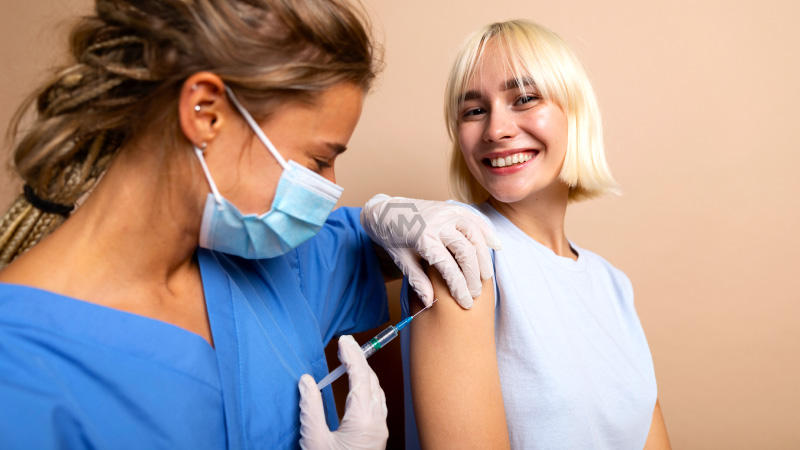- Using the non-dominant arm minimizes discomfort and interference with daily activities.
- The deltoid muscle is an easily accessible and less sensitive injection site.
- The arm choice does not impact the efficacy of the vaccine.
Healthcare providers often choose a person’s non-dominant arm for administering vaccines, primarily to minimize discomfort. For right-handed individuals, this means using the left arm. Dr.
Rajeev Gupta from CK Birla Hospital in Delhi explains that this preference helps to avoid soreness in the dominant arm, allowing individuals to continue their daily activities without hindrance.
The Practical Reasons Behind Vaccine Arm Preference
Additionally, the upper deltoid muscle is an ideal injection site due to its easy accessibility and lower sensitivity. Dr. Amit P. Ghawade from Motherhood Hospitals in Mumbai highlights that this makes the vaccination process more comfortable for recipients. Even if a person has experienced a reaction in one arm previously, switching to the other arm can help avoid potential issues without affecting the vaccine’s efficacy, as the immune response remains consistent.
The upper deltoid muscle is the favored injection site because it is easily accessible and less sensitive compared to other areas. Dr. Amit P. Ghawade from Motherhood Hospitals points out that this makes the process more comfortable for patients. Moreover, if a person has had a previous reaction in one arm, using the other arm can help avoid complications.
Importantly, the choice of arm does not influence the efficacy of the vaccine. Dr. Gupta assures that the immune response is consistent regardless of the arm used, ensuring the immunization’s effectiveness. This consideration applies broadly to most routine vaccines, including the flu shot and Covid-19 vaccine.
However, exceptions exist based on specific vaccines or medical conditions, underscoring the importance of following healthcare providers’ recommendations. Tailoring the approach to individual needs ensures both comfort and optimal protection, highlighting the nuanced considerations in vaccine administration practices.
Choosing the non-dominant arm for vaccinations is a practical decision to enhance comfort and maintain daily functionality without compromising the vaccine’s efficacy. Following healthcare providers’ guidelines ensures the best outcomes.
“The choice of arm does not affect the efficacy of the vaccine, as the immune response remains the same regardless of which arm is used.”
— Dr. Rajeev Gupta



